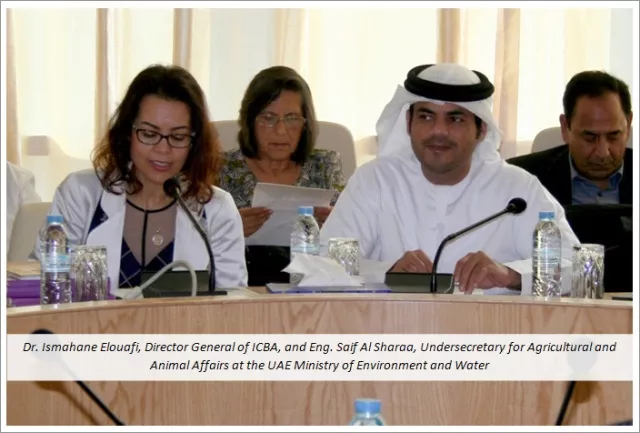International Science Forum “Quinoa as a New Crop in the Middle East and North Africa”
Quinoa has great potential in the food and feed industry being gluten-free and highly nutritious as well as being a crop that can thrive in marginal environments.
Today, the International Center for Biosaline Agriculture (ICBA) hosted the International Science Forum “Quinoa as a New Crop in the Middle East and North Africa”. The event was attended by distinguished guests from regional and international organizations, research centers, universities, and the UAE Ministry of Environment and Water (MOEW).
H.E. Eng. Saif Al Sharaa, Undersecretary for Agriculture and Animal Affairs at the UAE Ministry of Environment and Water, inaugurated the event. In his speech, Eng. Al Sharaa stressed on the nutritional benefits of Quinoa and its increasing adoption across the world. Eng. Al Sharaa encouraged the ongoing experiments in the UAE on identifying the various potentials of Quinoa in terms of adaptation to the climate conditions, productivity and economic benefits.
Dr. Ismahane Elouafi, Director General of ICBA, said that “The prospects for Quinoa are promising. With further testing there is a prospect for a wide scale adoption and production in the region. ICBA has initiated work with partners to improve food security and nutrition security through a substantial increase of quinoa production. ICBA, with partners, is also evaluating the potential of quinoa as an alternative food and feed crop for salt-affected areas in selected countries of the Middle East, most affected by salinity and water scarcity and where agriculture and agri-food sector contribute significantly to the national GDP.”
Quinoa is native to the Andes Mountains of Bolivia, Chile, and Peru. It is an annual herb growing 1-2 m tall producing white or pink seeds in large sorghum-like clusters. Quinoa is one of the most nutritious food crops currently known. In view of its exceptional nutritional quality and ability to grow in marginal environments, the Food and Agriculture Organization of the United Nations (FAO) has identified quinoa as one of the crops that will play an important role in ensuring food security in the 21st century.
Quinoa seeds are generally used to make flour, soup and as breakfast cereal. Quinoa flour works well as a starch extender when combined with wheat flour or grain, or corn meal, in making biscuits, bread, and processed food. Quinoa leaves can be eaten as a leafy vegetable, like spinach. The leaves and stalks can be fed to ruminants and the seeds have also been used as poultry feed. In poultry feeding trials, chicks fed with a ration containing cooked quinoa made equal gains to those receiving maize and skimmed milk.
Quinoa is a facultative halophyte that can grow successfully in poor soils, including pure sand and in environments with annual rainfall as little as 200 mm. Preliminary studies at ICBA research station and on-farm trials in the Western region of Abu Dhabi have demonstrated quinoa’s potential as an alternative crop for marginal environments characterized with poor soils and low quality irrigation water. ICBA in partnership with the Ministry of Environment and Water (MOEW), Abu Dhabi Farmer’s Service Center (ADFSC) and the Peruvian organizations Instituto Nacional de Innovacion Agraria (INIA) and Universidad National Agraria La Molina (UNALM) is currently evaluating the performance of several quinoa varieties for their productivity on a range of soils using different qualities of irrigation water in order to identify high yielding salt- and heat-tolerant quinoa lines/varieties.
